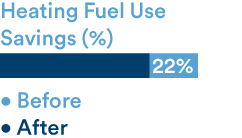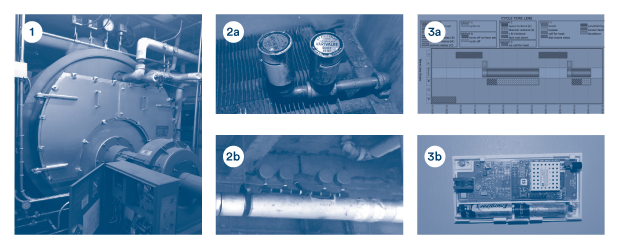Process
When the 1717 East 18th Street co-op board first began exploring ways to increase resident comfort and improve the efficiency of their building’s one-pipe steam heating system, installing a new heating control system was at the top of their list. After meeting with a heating contractor, however, the board learned that although new controls could help to reduce boiler run-times, saving fuel and money, a more holistic approach was needed to really improve steam heating system performance.

Facts about the building
Project type: One-Pipe Steam Heating System Upgrade
Location: Brooklyn, NY
Year of project completion: 2015
Base building completed: 1957
Building size: 105,000 sf/ 100 units
Building type: Residential co-op
Existing Conditions
Built in 1957, 1717 East 18th Street faced many of the challenges typical in older steam-heated buildings, including: uneven heating with hot and cold spots; overheating with residents opening windows in winter and consequent heating fuel waste; loud, clanging pipes; and occasional radiator leaks.

Green Features
1. Boiler and Burner Tune Ups
2a. Venting Improvements
Heat-Timer Varivalves for radiators
2b. Venting Improvements
Gorton #2 air vents for steam mains
3a. Heating Control System Upgrade
Heat-Timer MPC Platinum RINet controls system, online user interface
3b. Heating Control System Upgrade
Wireless temperature sensor for apartment units
Project Team
Project Owner
1717 E 18th Street Cooperative
Property Manager
FirstService Residential
Service and Installation
Champion
Partners
- NYC Accelerator
Benefits
- Balanced flow of steam with more consistent and even heating to all apartments.
- Greater ability to regulate boiler cycles and control building temperature.
- More efficient boiler and burner operation, with energy and fuel cost savings.
- Higher quality steam, quieter radiators, reduced leaking, and longer equipment lifespans.
- Increased occupant comfort and satisfaction.
Lessons Learned
The upgrades completed at 18th Street were relatively straightforward, from a technical perspective. Getting building staff and residents to buy into the proposed scope of work, and later adjusting to changes in apartment temperatures, proved to be a greater challenge. Ongoing communication with residents and staff about the reasons for, and benefits of, the upgrades was essential to getting their support and consent.
“We were eager to install new boiler controls to balance heat across the building and reduce energy waste. In the process, we learned more about our system, addressed underlying issues, developed a more energy-conscious community of residents, and saved money.